HIV Screening, Treatment, & Management
Overview
HIV, or Human Immunodeficiency Virus, is a viral infection that attacks the immune system, specifically targeting the CD4 cells (T cells), which play a crucial role in helping the body fight off infections. If left untreated, HIV can lead to acquired immunodeficiency syndrome (AIDS), a condition in which the immune system is severely compromised, leaving the body susceptible to opportunistic infections and certain cancers.
Signs and Symptoms of HIV
The symptoms of HIV can vary, and some people may not experience any symptoms for years after infection. However, the following are common signs and symptoms of early HIV infection (acute HIV):
Fever: Many people with acute HIV infection experience flu-like symptoms, including fever.
Fatigue: Persistent tiredness or fatigue is common.
Sore Throat: A sore throat, often accompanied by swollen lymph nodes, may occur.
Swollen Glands: Swollen lymph nodes, particularly in the neck, groin, or armpits, can be a sign of HIV infection.
Rash: A rash, often red or purple, may appear on the skin.
Muscle and Joint Pain: Muscle aches and joint pain are common.
Headache: Frequent or severe headaches may occur.
Nausea and Vomiting: Some people experience nausea or vomiting.
Diarrhea: Diarrhea, sometimes lasting for more than a week, can be a symptom.
These early symptoms, if present, typically occur within a few weeks after initial infection and may last for a short period. After this acute phase, many individuals with HIV enter a clinical latency stage, during which the virus remains in the body without causing noticeable symptoms. Without treatment, HIV can continue to weaken the immune system over time, leading to the development of AIDS and increasing the risk of opportunistic infections and certain cancers.
Treatment of HIV
HIV is a chronic medical condition, and there is currently no cure. However, with proper medical care and antiretroviral therapy (ART), people with HIV can manage the virus and live long, healthy lives. Key aspects of HIV treatment include:
Antiretroviral Therapy (ART): ART consists of a combination of medications that suppress the replication of HIV in the body, reducing the viral load to undetectable levels. This helps prevent the progression of the disease and reduces the risk of transmission to others.
Regular Medical Monitoring: People with HIV should see their healthcare provider regularly for monitoring of their viral load, CD4 cell count, and overall health.
Preventive Measures: Using safer sex practices and taking pre-exposure prophylaxis (PrEP) can help prevent the transmission of HIV to sexual partners.
Treatment of Opportunistic Infections: If opportunistic infections or complications arise, they are treated promptly.
Lifestyle Measures: Maintaining a healthy lifestyle, including proper nutrition, regular exercise, and avoiding smoking and excessive alcohol consumption, can help support overall health.
Mental Health Support: Many individuals with HIV benefit from counseling or mental health support to address emotional and psychological challenges.
Early diagnosis, prompt initiation of ART, and adherence to the treatment regimen are crucial for managing HIV effectively. When the virus is well-controlled, the immune system can recover, and the risk of developing AIDS and related complications is significantly reduced. Additionally, individuals with HIV who maintain undetectable viral loads are less likely to transmit the virus to others, making treatment a key component of HIV prevention efforts.
